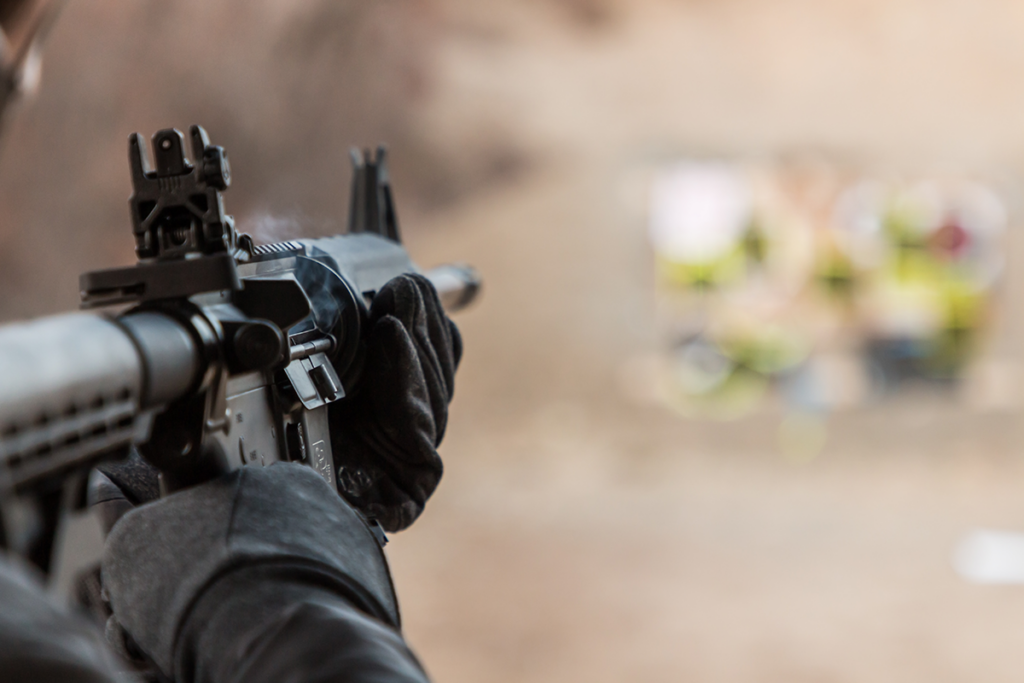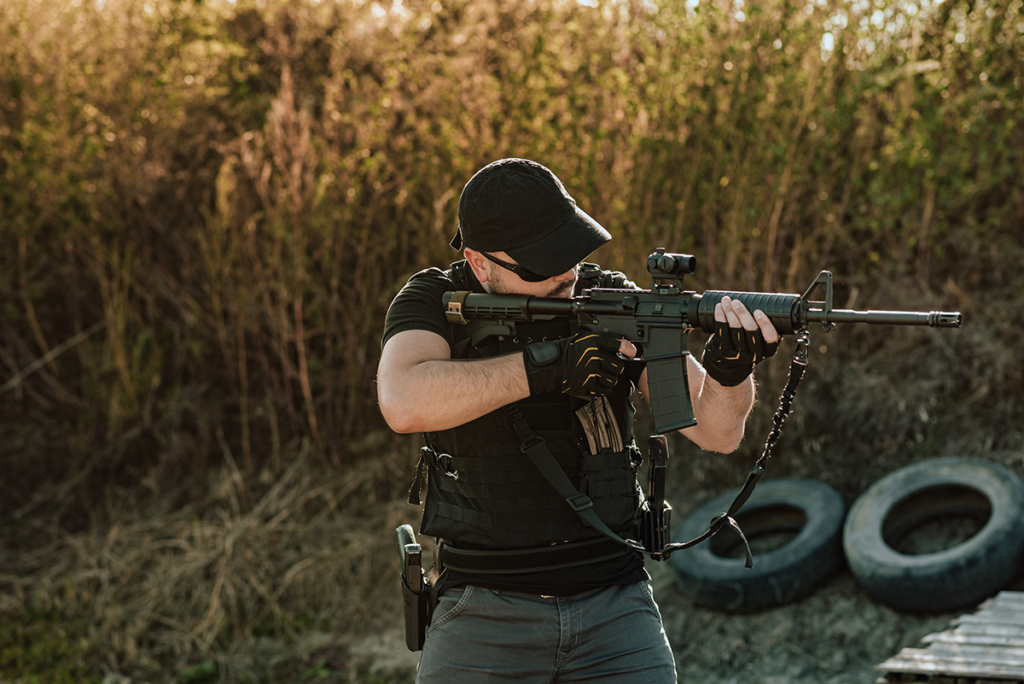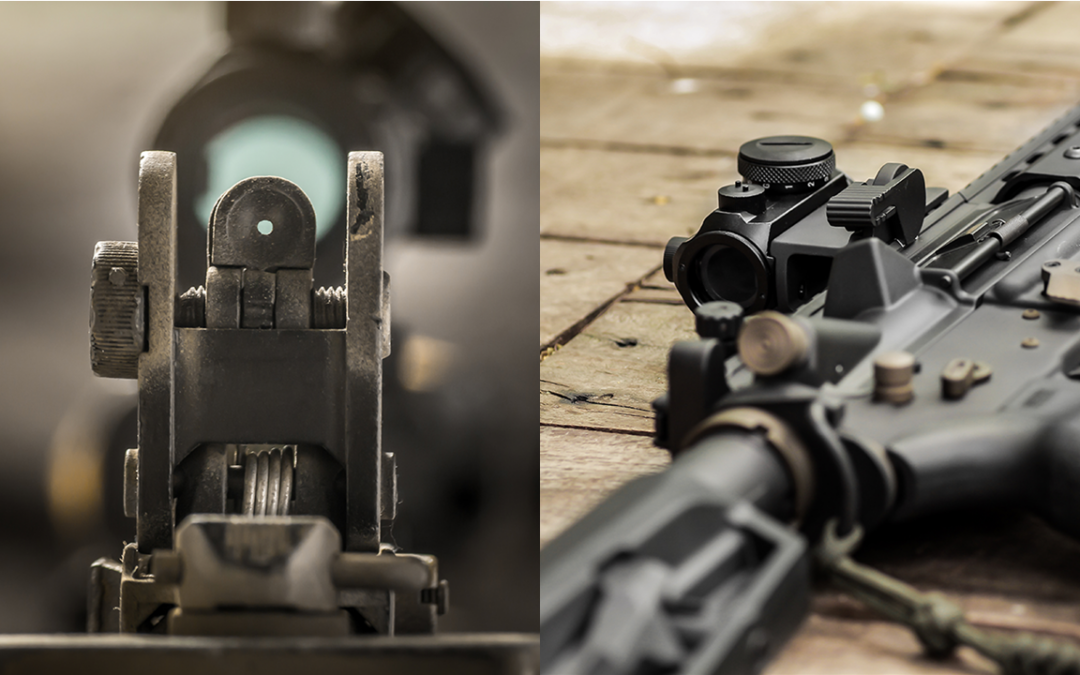Both Iron sights and red dot sights have their own advantages and disadvantages when it comes to using them on your AR-15. Let’s explore the pros and cons of each sight type so that you can make an informed decision on which one is right for you. Let’s get started!
Both is Better
There are many reasons why you might want to have both a red dot sight and iron sights on your firearm. The more you prepare for failure, the less you have to deal with it; if you have both, with iron sights, you have a backup sighting system if your red dot sight fails. If your sights are co-witnessed, when the red dot sight is mounted on the firearm in a way that the iron sights are aligned with the red dot when looking through the red dot sight, You will not have to make any mechanical change to the weapon to use iron sights in the event of failure from your red-dot.
There are many reasons why you might want to have both a red dot sight and iron sights on your firearm. The key takeaway is that both give you more options and flexibility in engaging targets at different ranges. Now that we have discussed that, I recognize that there are situations where you have to choose between one; this may be because of space on your rifle itself or cost. In either instance, there are some considerations for both you should make before purchasing.

Accuracy
The size of the dot in your rifle’s optical sight determines its precision. The standard size for most rifles is 2 MOA, or minutes of angle. This provides a good balance between speed and accuracy, allowing you to focus more on your target. A smaller dot may be more challenging to hit, especially in low-light conditions. However, a smaller dot will allow you to see your target clearly. Ultimately, it is up to the individual shooter to decide what size dot works best for them if they choose the red-dot route.
Since the development of firearms, people have been testing the accuracy of iron sights. In the past, military personnel were required to qualify with iron sights annually, even after modern sighting systems became standard issue. In particular, Marines were expected to be accurate up to 500 yards with iron sights. Although these requirements are no longer in place, we can still recognize the merit of the accuracy of iron sights. That said, it takes longer and more practice to reach this level of accuracy with iron sights compared to red dots. It is too easy to make a mistake with the misalignment of the iron sight posts. So if you go this route, you’ll have to understand you will need more practice to compete with red-dots.
Implementation
Red dot sights are convenient because they are lightweight and easy to use. However, iron sights can be a better choice in some situations. They are very lightweight and low profile, making them less likely to get caught on objects. Additionally, flip-up iron sights are very simple to use. Remember that iron sights can make it more challenging to see your target, so you may not be able to acquire it as quickly as you could with a red dot sight.

Red dots are popular for many shooters due to their versatility and performance. They take up very little rail space and are incredibly lightweight, making them an excellent option for keeping the weight down a rifle while offering improved performance over iron sights. You can mount your red dot with other optics, adding to their versatility. Iron sights also take up a minimal amount of rail space, making them a popular option as a backup sighting system that lies dormant until a user’s primary optic goes down.
Longevity
The red dot sight has become increasingly popular due to its durability and battery life. Many shooters find red dots save rail space and are easier to use than iron sights. However, iron sights have several advantages over red dots. Iron sights are generally more resistant to fog and dirt and do not require a battery. As a result, iron sights are often the preferred choice for shooters who want the utmost reliability.
Hopefully, this information helps you make an informed decision. No matter which option you choose, you aren’t going to be wrong; at the end of the day, it’s always up to the individual shooter to decide the best sighting system.

